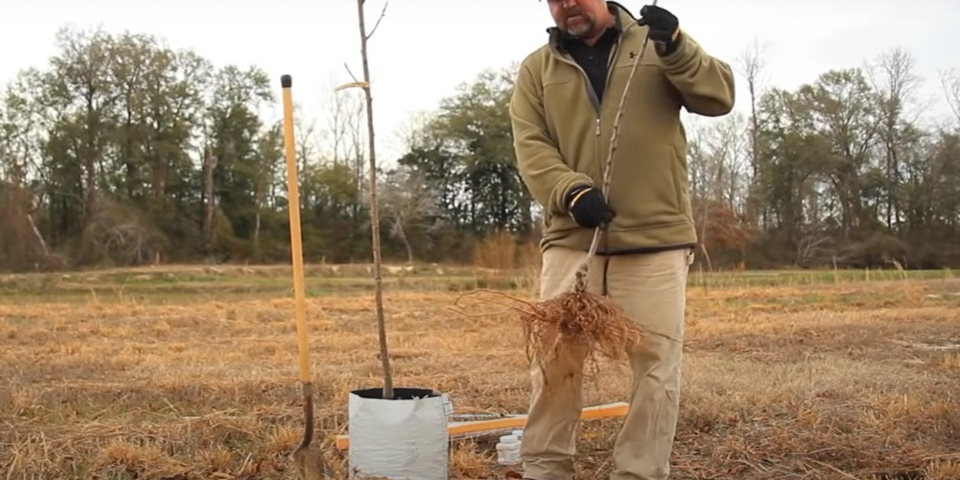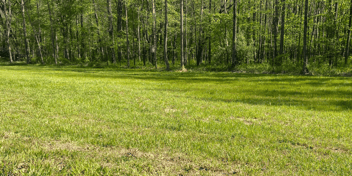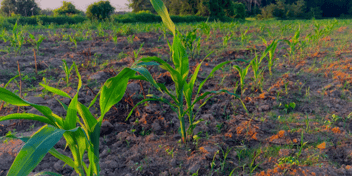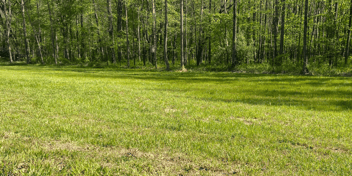
When’s the best time to plant a tree? The answer is, twenty years ago. But the second best time is today. If you’ve been on the fence about planting trees on your property to benefit whitetail deer, the following information will help you dig in and get started. We reached out to the tree guru, Allen Deese, of the Wildlife Group, for some Q&A on the best time to plant, as well as what trees work best to draw and hold whitetail deer. Ready to plant some trees? Read on.
When is the Best Time to Plant a Tree?
There’s a couple things to take into consideration when it comes to the best time to plant a tree. One, is your tree a container grown tree? Container grown trees are those purchased in a pot. The other option is a bare root tree. As the name implies, these trees are purchased or transplanted as a bare root tree while in its dormant state.
“The best time to plant container grown trees is the first of November through the end of March,” says Deese. “Bare root trees are best planted December through February, and up to the end of March, depending on the area. Bare root trees need a couple frosts on them to make them dormant, and that’s when you need to dig them and move.”
Making the Move
Deese says the key to transplanting bare root trees is to not let them freeze during the transplant process. “Just keep the roots moist with a wet newspaper or towel and kept in a cool place until planting.”
The opportunity to plant can vary by region, but for the most part you can get a bare root tree in the ground, whether north or south. A lot of folks think that their ground is too hard or frozen to plant a tree, but that’s not often the case, according to Deese. “If you can work the soil, you can plant a tree,” he says.
Deese also recommends planting as quick as you can so the tree benefits as much as possible and gets acclimated to the soil to begin the root development process. This is best accomplished before March. Planting after March tends to stress the tree too much.
Persimmons are hard to beat when it comes to drawing deer.
Best Trees for Deer
When asked about the best tree to plant for deer, Deese quickly responded with, “Anything that produces something they eat!” But when tightening up to the specifics, he shared that the best sellers for deer tend to be fruit trees, specifically pears and persimmons.
“Pears are a no-brainer,” says Deese. “They’ll grow nearly anywhere. You can plant them in your driveway!” But seriously, they are a very user-friendly tree that grows well and deer love to hang out around.
But if he could pick just one, Deese says he’d go with a persimmon. Persimmon trees grow well, fairly fast, and produce a soft fruit that deer will always be attracted to, compared to a pear that may produce hard fruit at times.
“Japanese persimmons grow huge fruit that is really good to eat,” says Deese.
On the flip side, there are pear tree varieties that produce until the end of the year, making it a great option to draw and feed deer longer than other tree varieties.
Pears and persimmons are also more versatile than a lot of other trees,” says Deese. “They can grow in variety of soils, with PH levels ranging from 5.5 – 7.5.”
“Apple and crabapple trees produce quicker, but tend to take more care than what you’ll find with pears and persimmons,” says Deese.
“Most hunters ask for the tree that produces food for their deer herd the fastest,” says Deese. “The reality for fruit trees is 4-6 years to produce right, with an established root system and limb structure.”
A little TLC goes a long way when it comes to the trees you plant.
Quick Tips for Planting Trees for Deer
-
Staggered drop is the key to variety - Plant different varieties of pears, persimmons, apples and crabapples for a staggered drop throughout the season.
-
Don’t forget cross-pollination - Every tree does better when cross-pollinated with different varieties. Be sure to plant several varieties together to make this happen.
-
Root stock is critical – Do what it takes to ensure your tree has a good foundation and root system from the start.
-
Avoid wet winter soils – “Wet feet” will kill your trees.
-
Don’t neglect pruning – Pruning a couple times a year will go a long way. The worst thing you can do for your tree is not doing anything in the way of pruning and TLC.
-
Use tree tubes – Tree tubes can triple the growth of your tree in the first year. “I will not plant a bare root tree without a tree tube,” says Deese.
Conclusion
Planting trees for wildlife is one of the greatest investments you can make on your property. Take the time, put in the work, and watch great things grow. Plant now, benefit later when it comes to greater encounters with the deer on your property.



